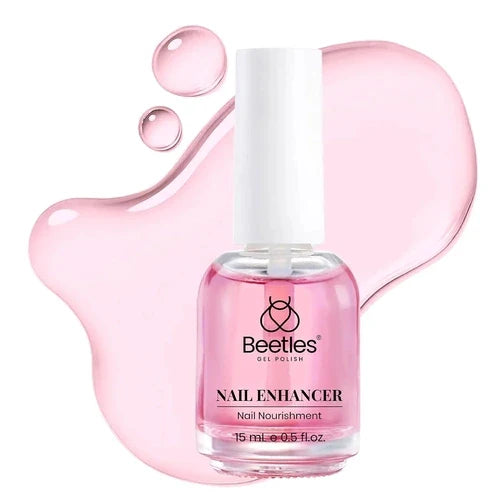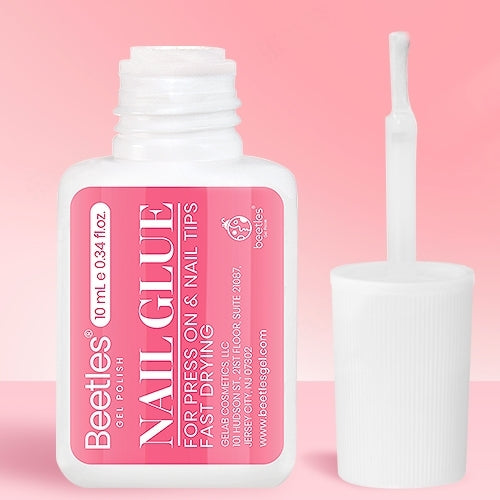Ever wondered how to make your manicure last longer? A nail primer might be the secret ingredient you're missing. This product helps your polish or extensions adhere better to your natural nails. People often confuse it with a nail dehydrator or a base coat, but they each have a unique job.
If you want to learn the difference and discover the pros and cons of using a nail primer, you're in the right place. Keep reading to find out everything you need to know about what a nail primer is and how to use it for a flawless and long-lasting manicure.
Read Also:
Base Coat vs Top Coat Explained: Nail Basics You Need to Know
What is Gel Nail Polish? All You Need to Know About Gel Nails
What is Nail Lacquer? Everything About Lacquer Nail Polish
What is Nail Primer?
A nail primer is a crucial step for a long-lasting manicure. Think of it as a bonding agent that prepares your nail plate for product application. Its main job is to help extensions or polishes, like gel and acrylic, stick to your natural nails much better. This prevents lifting and makes your manicure last longer.
You would typically apply it after prepping your nails but before the base coat or acrylic application. It's essential for acrylic nails, gel polish, nail extensions, nail tips, and intricate nail art designs to ensure everything stays perfectly in place. Additionally, it dries on its own in the air and does not require a UV LED nail lamp.
There are 2 main types of nail primers, and choosing the right one depends on your nail type and the manicure you're getting.
| Acid-Based Nail Primer | Acid-Free Nail Primer | |
| Main Ingredient | Methacrylic Acid | Non-acid formula |
| How it works | Creates tiny, microscopic etches on the nail surface for the product to grip onto. | Acts like double-sided tape, leaving a sticky surface that bonds the nail and the product. |
| Best For | Acrylic nails, especially for oily or problematic nail plates that are prone to lifting. | Gel polish and acrylics. It is a great option for most nail types, including sensitive ones. |
| Things to Note | Can cause a burning sensation if it touches the skin. It should be used sparingly. | It is gentler on the nails and surrounding skin, will not change the pH-balance of your nails. |
In short, an acid-based nail primer offers the strongest grip, making it ideal for acrylics on nails that don't hold product well. On the other hand, an acid-free nail primer is a gentler, versatile choice for most people and is commonly used for both gels and acrylics.
For those looking for a safe and effective option, Beetles Acid-Free Nail Primer is an excellent choice. It is both hema-free and acid-free, which significantly reduces the risk of allergic reactions and skin sensitivity. This makes it a perfect solution for achieving a durable, salon-quality manicure at home, even for those with sensitive skin.
Nail Primer vs Nail Dehydrator: What's the Difference
Now that you understand what a nail primer is, you might be wondering how it differs from a nail dehydrator. People often use these terms interchangeably, but they are 2 distinct products with different purposes. Both are important for good nail preparation, but they play separate roles in achieving a long-lasting manicure. Let's break down the differences.
| Nail Primer | Nail Dehydrator | |
| What it is | Creates a sticky surface for products to adhere to. | Removes oils and moisture from the nail plate. |
| Formula | Contains ingredients that act like double-sided tape, creating a strong bond. | Typically alcohol-based to quickly evaporate and dry out the nail surface. |
| Effect | Increases adhesion and prevents lifting of nail enhancements. | Cleanses and temporarily dehydrates the nail for better product application. |
| When to Use | Essential for acrylics and sometimes used for gel polish and nail tips, especially for oily nails. | A preparatory step for almost all nail services, including basic manicures, gels, and acrylics. |
| Application Scenario | After the nail dehydrator and before the base coat or acrylic. | The very first step after filing and shaping the nails. |
| Things to Note | Can be acid-based or acid-free, so choose based on your nail type. | Should be applied only to the nail plate, avoiding the skin. |
So, the main difference is that a nail dehydrator cleans and removes oil, while a nail primer acts as a connector between your natural nail and enhancement. For the best results, you really need both.
For your convenience, Beetles offers a Hema-Free Nail Primer and Dehydrator Set. This duo provides both essential prep steps in one package. The hema-free nail primer is gentle on your nails, and together, they ensure a strong and long-lasting bond for your manicure, giving you professional results at home.

Nail Primer vs Base Coat: What's the Difference
Another common point of confusion is the difference between a nail primer and a base coat. While both are applied before your color, they serve very different functions. A nail primer is all about preparation and adhesion, whereas a base coat is more about protection and providing a smooth canvas. Understanding their unique roles is key to a perfect manicure.
Here's a simple comparison to highlight their differences.
| Nail Primer | Base Coat | |
| What it is | Usually applied to natural nails to enhance adhesion. | Acts as a protective layer between the nail and the polish. |
| Formula | It's a thin and liquid formula that prepares the nail's surface for bonding. | A polish-like formula that may contain vitamins and strengtheners to nourish the nail. |
| Effect | Prevents lifting and makes enhancements like acrylics and gels last longer | Protects nails from staining, fills ridges for a smooth finish, and helps polish last longer. |
| When to Use | Primarily for gel extensions and acrylic nails. It's optional for regular gel polish and false nail tips. | A necessary part of the standard process for all types of gel manicures. |
| Application Scenario | Applied to the natural nail after the dehydrator but before any other product. | Applied after the nail primer (if used) and before the color polish or builder gels. |
In essence, a nail primer bonds the product to your nail, while a base coat protects your nail from the product. For services like acrylics, you would use a nail primer to ensure a strong bond. For a gel manicure, you would use a base coat to protect your nails and create a smooth surface, and you might use a primer beforehand if you have oily nails prone to lifting.
How to Use Nail Primer Effortlessly
Applying a nail primer is a simple and quick step that can significantly improve how long your manicure lasts. Proper application ensures you get the best possible bond between your natural nail and the enhancement product.
Here is a simple guide to follow:
- Make sure your nails are properly prepped. This means they should be filed, buffed, and completely clean of any dust or oils.
- Apply a nail dehydrator to the entire nail surface to remove any remaining moisture. Then let it dry for 15 seconds.
- Carefully apply a thin layer of nail primer to your natural nail. Be sure to avoid touching your skin or cuticles. A little bit of this product goes a long way.
- Let the primer air dry for about 40 seconds. It might remain slightly tacky, which is perfectly normal, as this helps the next layer stick.
- Once it's ready, you can proceed with your manicure. Apply your base coat if you're using gel polish, or use nail glue if you're applying nail tips.
Read Also:
How to Apply Gel Nail Polish Perfectly: A Beginner-Friendly Guide
How to Apply Press-on Nails Like a Pro: A Step-by-Step Guide
Bring Your Nail Prep Together with Beetles
Nail primer plays an important role in creating a clean base and improving product adhesion. It is often used together with a nail dehydrator to help manicures last longer and stay smooth. Understanding what nail primer is and how primer differs from a base coat or dehydrator makes it easier to choose the right steps for your nail routine.
To explore trusted nail prep products, shop and order from Beetles Gel Polish. These products are also available on the Beetles Amazon Store and Beetles Temu Store, making it simple to find what you need.





